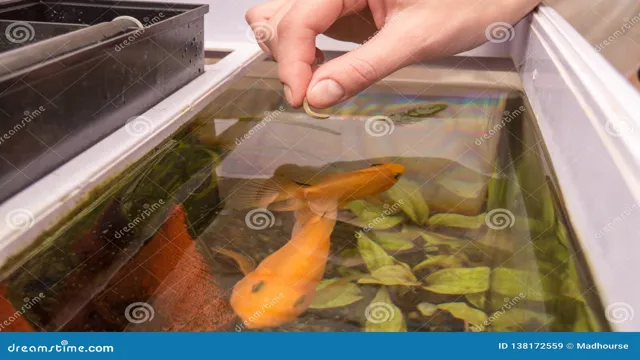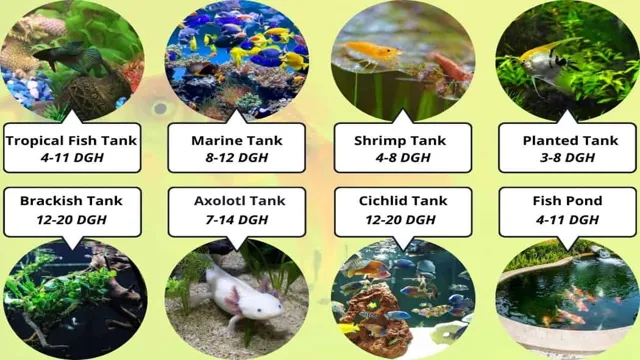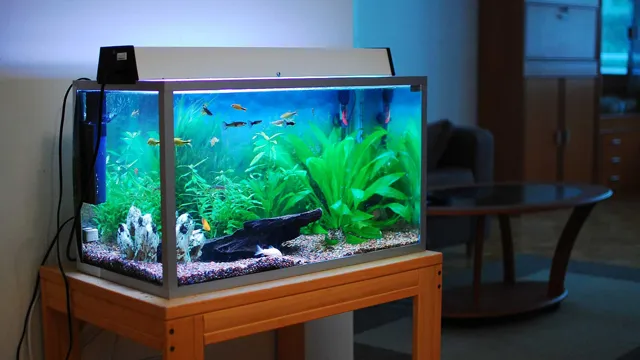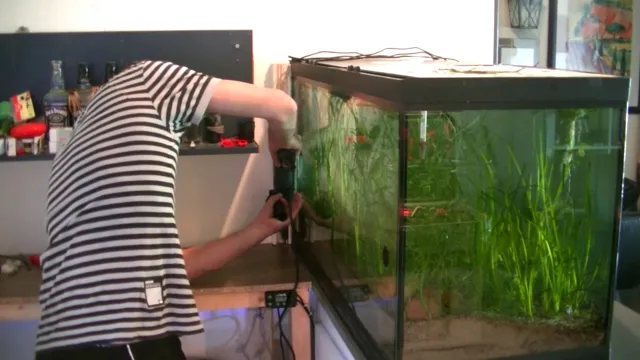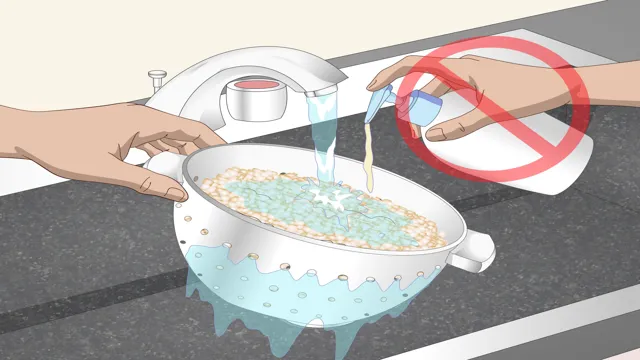How to Create a Self-Sustaining Ecosystem in an Aquarium: Tips and Techniques
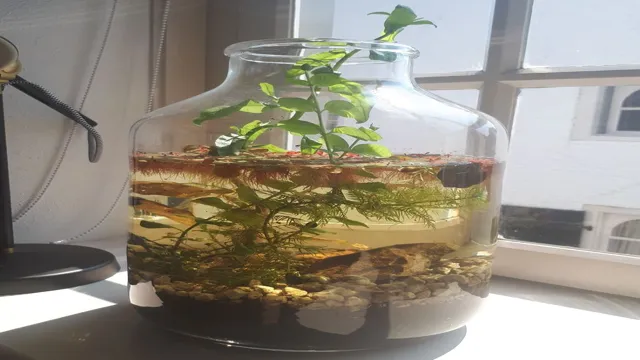
Aquarium keeping is more than just a hobby. It’s an art, and a science. Every aspect of creating a beautiful and healthy aquatic environment requires knowledge, care, and attention to detail.
One of the most satisfying and challenging aspects of aquarium keeping is creating a self-sustaining ecosystem. This involves creating an environment where every living organism in your aquarium can thrive without constant intervention from you. It’s the ultimate goal for many aquarium enthusiasts, but it requires patience, dedication, and a deep understanding of the natural processes that govern aquatic ecosystems.
Creating a self-sustaining ecosystem requires that you strike a delicate balance between all the elements of your aquarium. You need to make sure that the water quality, lighting, temperature, and oxygenation are all perfect for the types of organisms you want to keep. You also need to make sure that you have a diverse population of plants and animals to create a natural food chain that can sustain itself without intervention.
But even if you have everything set up perfectly, creating a self-sustaining ecosystem is never a guarantee. It requires constant monitoring and adjustment to make sure that everything is in balance. You need to make sure that there are no imbalances in the nutrient cycles that can lead to algae blooms or fish deaths.
You also need to be aware of any disease outbreaks or other problems that can occur. In this blog, we’ll provide you with all the information you need to create a self-sustaining ecosystem in your aquarium. We’ll cover everything from the basics of water chemistry to advanced techniques for creating a natural food chain.
We’ll also provide you with tips and tricks for monitoring and adjusting your aquarium to make sure that everything stays in balance. With our help, you’ll be able to create a beautiful, healthy, and self-sustaining aquarium that will provide you with years of enjoyment.
Understanding the Nitrogen Cycle
Creating a self-sustaining ecosystem in an aquarium can be a rewarding experience, but it requires proper understanding of the nitrogen cycle. The nitrogen cycle is a complex biological process that occurs within a closed system, such as an aquarium. It involves the conversion of harmful ammonia to nitrite and then nitrate, which is then removed from the water through biological, mechanical, or chemical filtration.
The key to creating a self-sustaining ecosystem in an aquarium is to establish a biological filter that houses beneficial bacteria responsible for converting ammonia to nitrite and nitrate. These bacteria require a constant source of ammonia to survive, which can be provided by adding fish or other aquatic animals to the aquarium. However, it is important to not overcrowd the tank, as too many fish can produce excess ammonia, leading to water toxicity and harm to the aquatic life.
By understanding and maintaining the nitrogen cycle, one can create a thriving and self-sustaining ecosystem in their aquarium.
What Is the Nitrogen Cycle?
The nitrogen cycle is a crucial process that occurs in the environment, especially in soil and bodies of water. In this cycle, nitrogen undergoes several chemical transformations, allowing it to be continuously recycled and reused. Nitrogen is primarily obtained by plants from the soil in the form of nitrate, which is a product of nitrogen fixation.
Nitrogen fixation is the process by which plants and soil bacteria convert nitrogen gas from the atmosphere into forms that can be used by plants. The nitrogen is then taken up by plants, incorporated into proteins, and eventually released back into the soil through decomposition. In addition to nitrogen fixation, there are other steps that make up the nitrogen cycle, including nitrification and denitrification.
Nitrification is the process by which ammonia is converted into nitrate by bacteria, while denitrification is the process by which nitrate is converted back into nitrogen gas. Understanding the nitrogen cycle is essential for maintaining healthy ecosystems as the availability of nitrogen is one of the limiting factors for plant growth.
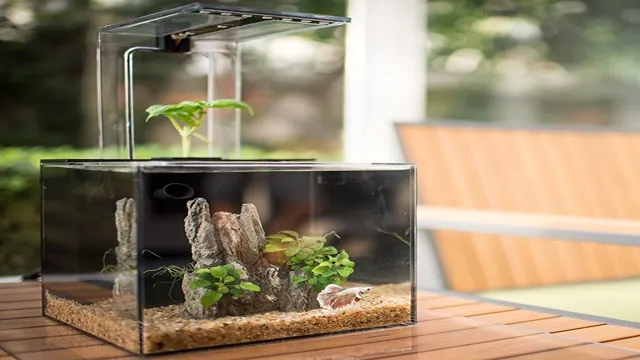
Why Is It Important?
The nitrogen cycle is a crucial process that helps to maintain a healthy and stable ecosystem. Understanding this cycle is important for various reasons. Firstly, nitrogen is an essential element found in living organisms such as plants and animals.
The nitrogen cycle essentially recycles this element, converting it into various forms that can be easily used by living organisms. When plants and animals die, their nitrogen is released back into the environment, thanks to the nitrogen cycle. Secondly, the nitrogen cycle plays a vital role in maintaining the balance of our planet’s atmosphere.
Nitrogen makes up around 78% of the atmosphere, and the nitrogen cycle helps to ensure that this element stays in balance. This helps to regulate global temperatures and prevent climate change. Additionally, the understanding of the nitrogen cycle is crucial in agriculture.
Farmers use nitrogen fertilizers to enhance the growth of crops. Understanding how these fertilizers interact with the nitrogen cycle can help farmers reduce harmful environmental impacts. Overall, understanding the nitrogen cycle is essential for all members of society, from farmers to environmentalists, to ensure that our planet remains healthy and stable for generations to come. (See Also: How to Make Canister Filter for Aquarium: DIY Guide for Effective Filtration)
Choosing the Right Plants and Fish
When it comes to creating a self-sustaining ecosystem in an aquarium, choosing the right plants and fish is crucial. Firstly, it’s important to select hardy and easy-to-care-for plants that are able to thrive in an aquatic environment. Some great options include Java Ferns, Anubias, and Amazon Swords.
These types of plants are known for their ability to absorb excess nutrients in the water, helping to maintain a healthy balance in the tank. Additionally, it’s important to choose fish that are compatible with the plants you’ve chosen. Some fish, such as Goldfish or Cichlids, can be quite destructive to aquarium plants and should be avoided.
Instead, consider species such as Neon Tetras, Corydoras, or Guppies, which are gentle and won’t uproot or consume your plants. By carefully selecting the right plants and fish, you can create a beautiful and self-sustaining ecosystem in your aquarium.
Selecting Compatible Fish Species
Choosing compatible fish species for your aquarium is crucial for the overall health and happiness of your aquatic pets. Before selecting fish, it’s essential to understand their behavior and habitat needs. Not all fish species can coexist peacefully, and overcrowding can lead to illness and aggression.
It’s also essential to consider the type of plants in your aquarium while selecting fish. Some species of fish can damage or eat plants, which can disrupt the ecosystem and negatively affect your tank’s water quality. By choosing the right combination of fish that are compatible with one another and the plants in your aquarium, you can create a thriving and beautiful aquatic environment.
So take the time to research and plan before adding any new fish to your tank, and your efforts will pay off in the long run.
Choosing Live Plants
When choosing live plants for your aquarium, it’s essential to consider the needs of your fish. Some plants are more suitable for certain species, while others may not be compatible at all. Before selecting your plants, research the type of fish you have and what plants they would thrive with.
It’s also important to consider the size and lighting requirements of the plants. If you have a smaller tank, you’ll want to go with smaller plants that won’t overcrowd the aquarium. Lastly, be mindful of the maintenance needed for different plants as some require more care than others.
Picking the right plants will not only enhance the aesthetics of your aquarium but also provide a healthy environment for your fish.
Setting Up Your Aquarium
Creating a self-sustaining ecosystem in your aquarium is a fascinating endeavor for any aquatic enthusiast. The first step is to choose the right tank size and position it in a suitable location. It’s crucial to research and select fish and other aquatic creatures that have complementary needs and behaviors.
A mix of plant and animal life can create a balanced ecosystem that thrives without external intervention. Adding natural filtration methods like live rock, plants, and beneficial bacteria can help maintain quality water while reducing the need for frequent water changes. It’s important to monitor water parameters regularly and adjust lighting, feeding, and other environmental factors as needed to ensure your ecosystem remains healthy and self-sustaining.
With patience and care, your aquarium can become an intricate and self-supporting world, providing endless enjoyment and fascination. So, let’s get started with setting up your self-sustaining ecosystem and create a beautiful world of aquatic life in your own home.
Decorating Your Aquarium
Setting up your aquarium can be a fun and exciting process, but it’s important to get everything just right to ensure the health and happiness of your aquatic pets. The first step is to choose the right size aquarium for your space and the type of fish you’ll be keeping. When decorating your aquarium, consider the natural environment of the fish.
This includes adding plants, rocks, and other decorations that mimic their natural habitat. It’s important to also choose a high-quality filtration system to keep the water clean and healthy. Once you have everything set up, take the time to cycle your aquarium, which involves establishing the right balance of beneficial bacteria in the water to help break down organic matter and keep the water clean and healthy. (See Also: How to Change Sand to Gravel in Aquarium: A Step-by-Step Guide)
By following these steps, you can set up a beautiful and healthy aquarium that will be a joy to watch for years to come.
Adding a Substrate
When setting up your aquarium, adding a substrate is an important step to creating a healthy and thriving environment for your aquatic plants and animals. A substrate is a layer of material – usually gravel, sand, or soil – that lines the bottom of your tank and provides important benefits. Not only does it create a natural look and feel for your aquarium, but it also acts as a host for beneficial bacteria that help your tank cycle and maintain good water quality.
Additionally, a substrate can anchor plants and protect delicate fish species from getting injured on sharp or rough tank bottoms. When choosing a substrate, consider the needs of your specific tank inhabitants and select a material that will promote their health and growth. With a proper substrate, your aquarium will be one step closer to becoming a beautiful, thriving ecosystem that you’ll enjoy for years to come.
Selecting the Right Equipment
Setting up your aquarium can be a thrilling experience for all aquatic enthusiasts. Selecting the right equipment is essential to start your underwater world right. First and foremost, it is important to choose the right tank size that suits your requirements and the space available in your home or office.
Once you have decided on the size, it is time to select a good quality filter that can provide efficient water-circulation, eliminate contaminants, and maintain the quality of the water. A heater is also an essential element to ensure the right temperature for your aquatic life. Additionally, selecting a good quality substrate, lighting, and aquatic plants can make a significant difference to the overall set-up of your aquarium.
Before you start with fish, it is recommended to let your aquarium run for at least a week or two, so that the water chemistry stabilizes. At this point, testing the water parameters for pH levels, ammonia, nitrite, and nitrate levels is crucial to ensure the health and safety of aquatic life. With good research and careful selection, you can set up a beautiful and thriving aquarium that can become a source of pride and relaxation.
Maintaining Your Self-Sustaining Ecosystem
Creating a self-sustaining ecosystem in your aquarium can be a rewarding experience, but it also requires regular maintenance. To keep your ecosystem thriving, you’ll need to monitor water quality, ensure proper nutrient cycles, and maintain a healthy population of plants and animals. Regular water changes can help keep the environment stable and prevent the buildup of harmful toxins.
It’s also important to avoid overfeeding and to provide plants with adequate light and nutrients. By keeping a close eye on your aquarium and making adjustments as needed, you can enjoy a self-sustaining system that’s both fascinating and beautiful. Remember, the more you put into maintaining your ecosystem, the more you’ll get out of it! So, don’t forget to test the water regularly, keep your inhabitants well-fed and happy, and enjoy the magical world that you’ve created in your aquarium.
Monitoring Water Quality
Maintaining a self-sustaining ecosystem in your home fish tank requires monitoring the water quality regularly. It’s essential to maintain stable water conditions to ensure the health and well-being of your fish and aquatic plants. Testing kits can help you maintain optimal levels of pH, ammonia, nitrate, and nitrite.
These kits are easy to use and available at most pet stores. It’s also essential to check the temperature of the water, as changes in temperature can impact the balance of the ecosystem. By keeping an eye on these parameters, you can prevent problems before they occur and ensure your freshwater landscape thrives.
Remember, your fish rely on you to provide them with a clean, healthy environment, so regular water quality analysis is essential.
Feeding Your Fish and Plants
Maintaining a self-sustaining ecosystem in your aquarium requires proper feeding of both your fish and plants. Fish need a balanced diet that includes both protein and vegetables, while plants need essential nutrients like nitrogen, phosphorus, and potassium. One way to ensure that your fish are getting the proper nutrition is to opt for high-quality fish food that contains all the nutrients they need.
Another way is to incorporate live or frozen foods such as brine shrimp, daphnia, and bloodworms into their diet. When it comes to plants, you can add fertilizer or supplements to the water to provide them with the necessary nutrients. However, it’s important to monitor the nitrogen levels in the water to prevent overfeeding, which can lead to a build-up of harmful compounds like ammonia.
Additionally, some fish species like algae eaters can consume the excess nutrients from plants and help maintain a healthy balance in the ecosystem. By regularly monitoring and adjusting your feeding regimen, you can ensure that both your fish and plants thrive in a self-sustaining ecosystem.
Performing Regular Maintenance
Maintaining Your Self-Sustaining Ecosystem is crucial for ensuring that your ecosystem remains healthy and thriving. Regular maintenance is one of the most important aspects of ecosystem management. You should regularly check the pH and nutrient levels, monitor the water temperature, and replace any worn or damaged equipment. (See Also: How to Dissolve Aquarium Salt: Tips and Tricks for Successful Dissolving)
It’s also essential to monitor the population of the different species in your ecosystem and ensure they’re thriving within their environment. By performing regular maintenance tasks and addressing any issues promptly, you can avoid problems down the line and intervene before they become more significant. Just like we take care of our bodies to remain healthy, our ecosystem also requires attention and care to remain self-sustaining.
By treating your ecosystem with care and paying attention to its needs, you can help it thrive and enjoy all the benefits it has to offer.
Conclusion
In the immortal words of Captain Planet: the power is yours! Creating a self-sustaining ecosystem in your aquarium is not only beneficial for your aquatic friends, but also for the environment. By achieving a balance between flora and fauna, maintaining water quality, and staying in tune with the needs of your ecosystem, you can sit back, relax, and watch your aquarium flourish without the need for constant tinkering. Plus, who knows? You might just become the envy of all the fish in the sea.
So go forth, aquatic adventurers, and create the ultimate self-sustaining aquarium!”
FAQs
What is a self-sustaining ecosystem in an aquarium?
A self-sustaining ecosystem in an aquarium is where the fish, plants, and other organisms inside the aquarium work together to create a balanced environment that can sustain itself without frequent human intervention.
What are the benefits of having a self-sustaining ecosystem in an aquarium?
The benefits of a self-sustaining ecosystem in an aquarium include less maintenance, lower costs, healthier fish, and a more natural and beautiful display.
How do I start creating a self-sustaining ecosystem in my aquarium?
To start creating a self-sustaining ecosystem in your aquarium, you need to choose the right fish and plants that can live together in a balanced environment, provide proper filtration and lighting, and establish a consistent feeding schedule.
Can I add more fish or plants to a self-sustaining aquarium ecosystem?
You can add more fish or plants to a self-sustaining aquarium ecosystem, but you need to do it gradually and make sure they are compatible with the existing organisms. Overcrowding can disrupt the balance of the ecosystem.
How do I maintain a self-sustaining aquarium ecosystem?
To maintain a self-sustaining aquarium ecosystem, you need to monitor the water quality regularly, provide appropriate lighting and temperature, perform regular water changes, prune and replace plants as needed, and avoid overfeeding.
What are some common mistakes to avoid when creating a self-sustaining aquarium ecosystem?
Common mistakes to avoid when creating a self-sustaining aquarium ecosystem include adding too many fish too quickly, overfeeding, not providing enough filtration or lighting, and using inappropriate plants or decorations.
Can a self-sustaining aquarium ecosystem work without any human intervention?
A self-sustaining aquarium ecosystem can work without any human intervention, but it still requires regular monitoring and occasional adjustments to maintain the balance.

